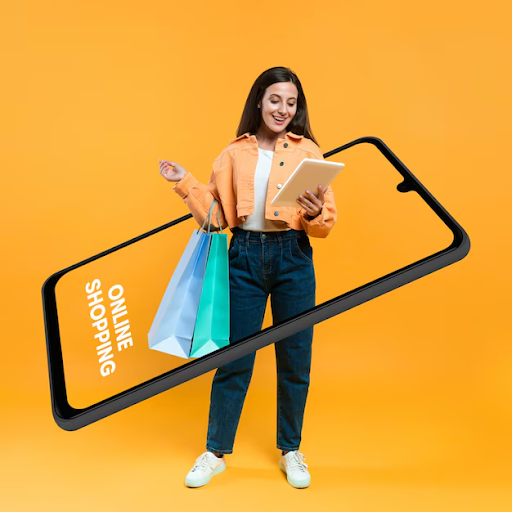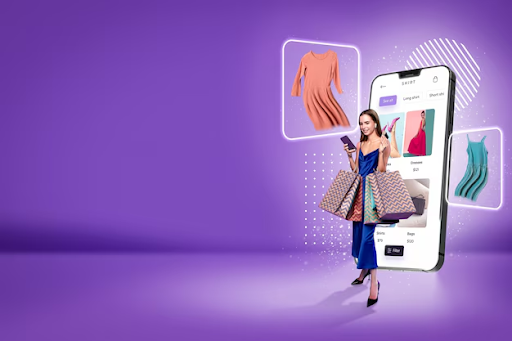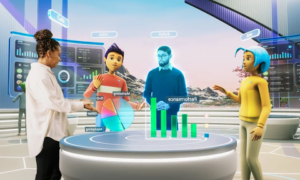The rise of e-commerce has transformed the way consumers shop, offering convenience, variety, and accessibility at the click of a button. However, one element has been missing for quite some time—the ability to provide an immersive shopping experience that closely mirrors the in-store interaction. This is where video commerce comes into play. By blending the power of video content with the e-commerce experience, video commerce is revolutionizing the way products are marketed and purchased online. From shoppable videos to live-streamed shopping events, video is fast becoming the preferred method of consumer engagement. This blog will explore the trends, technologies, and case studies that highlight the growing importance of video in the online shopping experience, with a special focus on platforms like Freckled Poppy, which have adopted video commerce to enhance their customer experience.
The Rise of Video Commerce in E-Commerce
Video commerce, often referred to as “v-commerce,” is a relatively new trend that combines the power of video with e-commerce to create an engaging shopping experience. It enables retailers to showcase products through video content, allowing customers to make purchasing decisions based on real-time demonstrations, tutorials, and immersive visual storytelling. As video consumption continues to soar, businesses are embracing video as a way to connect with customers, build brand loyalty, and drive sales.
The Shift Toward Visual Shopping Experiences
In the past, online shopping was mainly text and image-based, with limited interactivity. However, as technology has advanced, consumers have increasingly sought out more dynamic and interactive ways to engage with products. Video commerce allows for a deeper, more personal connection between the brand and the consumer by using visual storytelling to bring products to life. Whether it’s a product demonstration, a behind-the-scenes look at how an item is made, or a live-streamed shopping event, video creates a more immersive experience that pictures and descriptions alone cannot provide.
Video as a Driver of Consumer Engagement
Studies have shown that video is a highly effective tool for engaging consumers. According to a report by Wyzowl, 84% of consumers say that they’ve been convinced to make a purchase after watching a brand’s video. Video has the power to communicate key product features, benefits, and use cases in a way that is far more engaging than static images or written content. Furthermore, videos can evoke emotions, build trust, and showcase the human side of a brand, all of which are important elements in driving consumer engagement.
The Technologies Powering Video Commerce
Several technologies are playing a pivotal role in the rise of video commerce. These technologies are enabling businesses to create interactive, shoppable video content that enhances the customer experience. Let’s take a look at some of the key technologies that are shaping the future of video commerce.
Interactive Video and Shoppable Videos
Interactive video is one of the most exciting developments in video commerce. It allows viewers to interact with the video content in real time, either by clicking on links or making choices that impact the video’s progression. For example, a consumer watching a fashion video might be able to click on items of clothing worn by the model to learn more about them or add them directly to their shopping cart. This type of interactive video takes video commerce to the next level by allowing consumers to take action without ever leaving the video, creating a seamless shopping experience.
Shoppable videos, which allow viewers to purchase products directly from the video content, are another key technology in the video commerce space. Platforms like Instagram, YouTube, and TikTok have all introduced features that enable brands to add links to products featured in their videos. This has made it easier than ever for consumers to discover and buy products while watching their favorite content.
Live Streaming and Social Commerce
Live streaming has become one of the most popular ways for brands to engage with consumers in real time. Live-streamed shopping events allow brands to showcase products, answer customer questions, and offer exclusive discounts—all while creating a sense of urgency and excitement. Social media platforms like Instagram, Facebook, and TikTok have capitalized on this trend, making it easier for businesses to broadcast live shopping events to their audiences.
In addition to live streaming, social commerce has become an integral part of the video commerce ecosystem. Social commerce refers to the integration of e-commerce with social media platforms, allowing consumers to make purchases directly from social media posts and videos. The ability to shop directly through platforms like Instagram and TikTok has made social commerce a key driver of video commerce, particularly among younger, tech-savvy consumers who are already spending a significant amount of time on social media.
Augmented Reality (AR) and Virtual Try-Ons
Augmented reality (AR) is another technology that is enhancing the video commerce experience. AR allows consumers to virtually try on products or visualize how they might look in their own homes before making a purchase. For example, a cosmetic brand might offer an AR feature that lets customers virtually try on makeup by using their phone’s camera, while a furniture company could allow customers to visualize how a piece of furniture would look in their living room using AR technology.
The combination of AR with video content offers a highly immersive and interactive shopping experience. Brands that incorporate AR into their video commerce strategies can provide consumers with a more realistic, personalized, and engaging experience, which can ultimately drive higher conversion rates.
Case Studies: Brands Leading the Charge in Video Commerce
Many brands are already embracing video commerce and reaping the benefits. Here are a few case studies of brands that have successfully implemented video commerce strategies:
1. Freckled Poppy: Using Video Commerce to Drive Engagement
Freckled Poppy, a popular online store offering handmade skincare products, is a great example of a brand that has successfully leveraged video commerce to engage its audience and boost sales. The brand uses video content on its website and social media channels to showcase the benefits of its products, educate consumers on skincare routines, and provide tutorials on how to use its products effectively.
Freckled Poppy has also embraced live-streamed shopping events, where they engage directly with their audience, answer questions, and demonstrate the effectiveness of their products in real time. This interactive approach has helped the brand build a loyal customer base, increase engagement on social media, and drive conversions through its website.
2. Fashion Brands: Influencer-Led Live Shopping
Fashion brands have been quick to adopt video commerce, particularly through influencer-led live shopping events. Brands like PrettyLittleThing and Fashion Nova have partnered with influencers to host live-streamed shopping events where influencers try on outfits, discuss fit and sizing, and offer exclusive discounts to viewers. These events create a sense of urgency, as viewers are encouraged to purchase products while the live stream is still ongoing.
This approach has proven to be highly effective, particularly for Gen Z and Millennial consumers, who are more likely to trust influencers’ recommendations and make a purchase based on their content. Live-streamed shopping events have also created a sense of community, allowing viewers to interact with each other and with the brand in real time.
3. Tech Brands: Shoppable Product Demos
Tech companies like Apple and Samsung have long used video content to showcase the features and benefits of their products. However, in recent years, many tech brands have taken things a step further by integrating shoppable videos into their marketing strategies. These videos feature product demonstrations and tutorials, with clickable links that allow viewers to purchase the products directly from the video.
For example, Apple’s product launch events are often broadcast as live streams, with viewers able to purchase the products as soon as they are announced. This integration of video content with e-commerce has allowed tech brands to create a seamless shopping experience that drives immediate sales.
The Future of Video Commerce
As video commerce continues to grow, its impact on the e-commerce industry will only increase. The combination of video content, interactive features, and advanced technologies like AR and live streaming will create a more personalized and immersive shopping experience. Brands that embrace video commerce will be able to connect with consumers in a deeper, more meaningful way, which will ultimately lead to increased customer loyalty and higher conversion rates.
In the future, video commerce will likely become the dominant form of online shopping. With advancements in AI, 5G connectivity, and immersive technologies like virtual reality (VR), the possibilities for video commerce are endless. As consumer expectations continue to evolve, brands will need to stay ahead of the curve and embrace video as a core part of their e-commerce strategy to remain competitive.
Conclusion: Embracing the Future of E-Commerce with Video Commerce
Video commerce is rapidly becoming an essential component of the e-commerce experience. By combining the power of video with interactive, shoppable features, brands can create more engaging, immersive, and personalized shopping experiences for their customers. As platforms like Freckled Poppy and others continue to innovate, video commerce will likely play a significant role in shaping the future of online shopping. For businesses looking to stay competitive, now is the time to invest in video commerce and begin incorporating it into their e-commerce strategy.



































